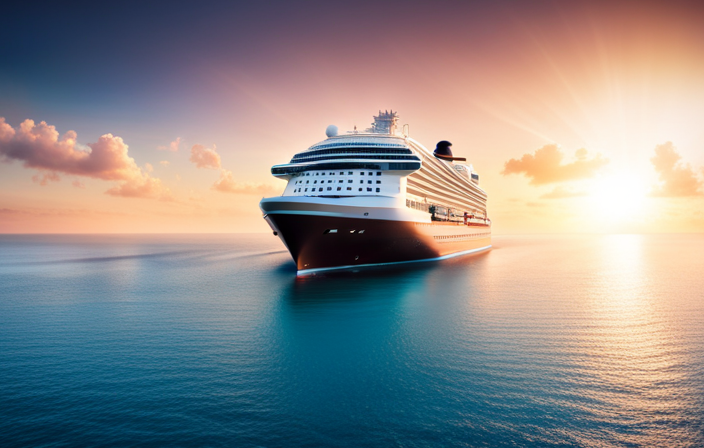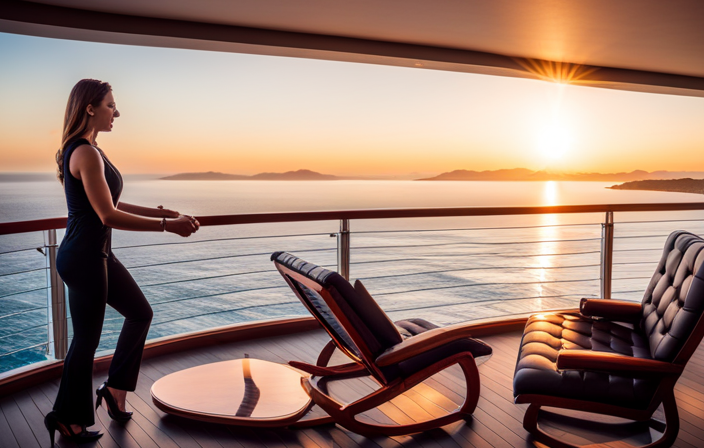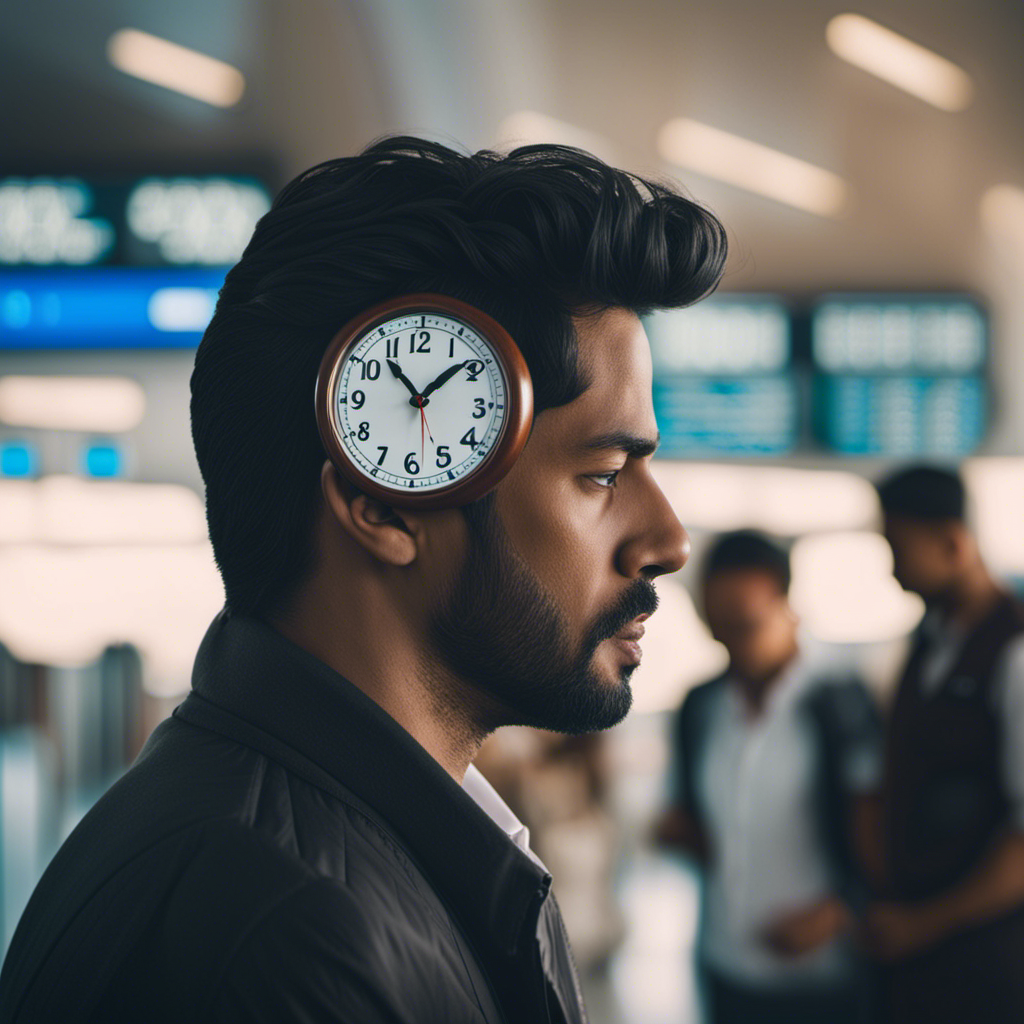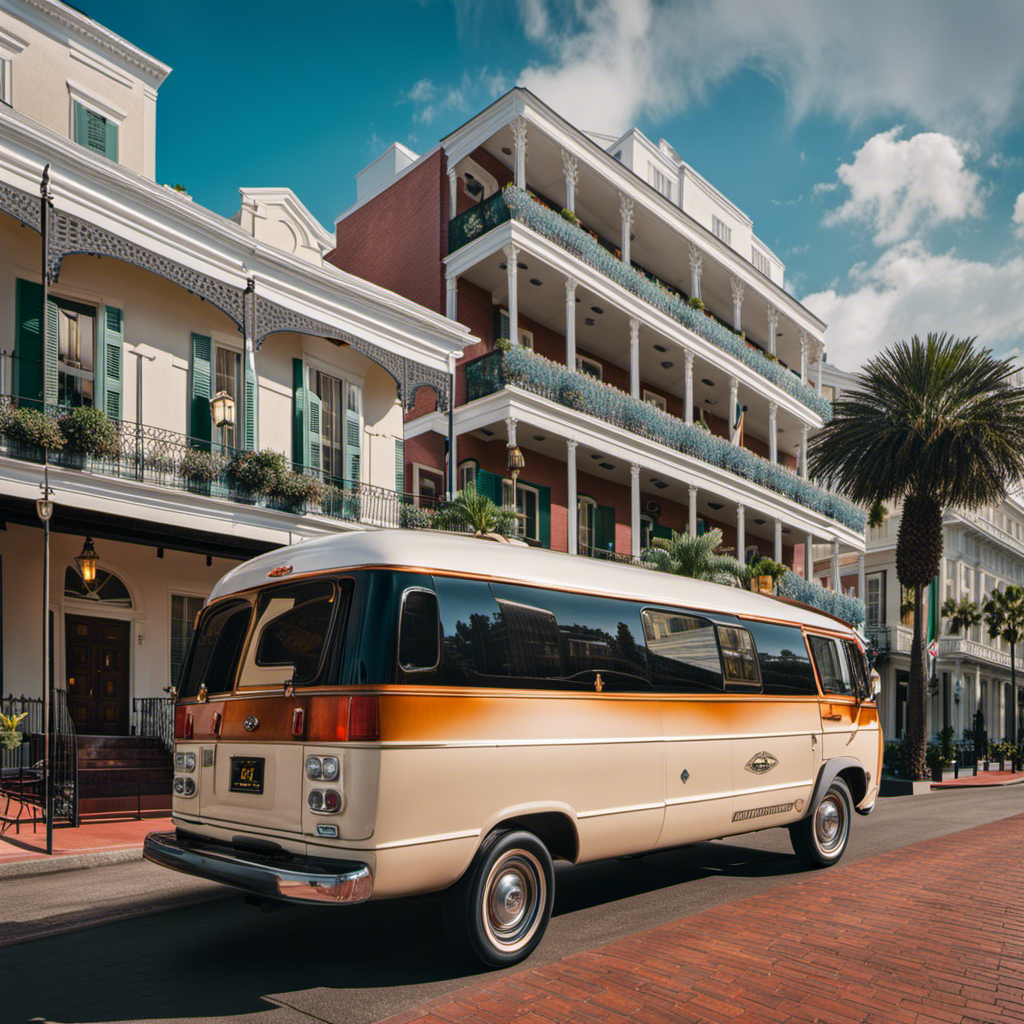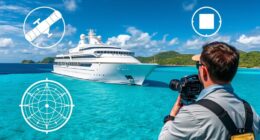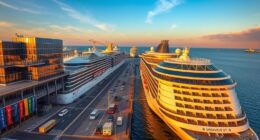Hey there! Have you ever pondered the elements that impact the velocity of cruise ships? Join me as I delve into the world of cruise ship performance and passenger contentment on these impressive sea vessels.
When it comes to cruise ship speed, there are several key factors at play. From the size of the ship to its engine power and fuel consumption, every detail affects how fast these floating giants can sail through the open waters.
As a captain, my main goal is to ensure a memorable experience for the passengers. That’s why we often adjust the speed to allow them to fully appreciate landmarks, scenic vistas, and breathtaking natural wonders like Alaska’s Inside Passage, glaciers, and fjords. Of course, we must also consider the weather and ocean conditions to ensure the safety of everyone on board.
On average, cruise ships typically travel at around 20 knots, which is about 23 miles per hour. However, it’s worth noting that they rarely reach their maximum speed, except during sea trials. Certain cruise lines, like Royal Caribbean, are known for having faster average speeds, while others, like Cunard’s Queen Mary 2, boast impressive maximum speeds of up to 30 knots.
Ship design has come a long way in improving both engine and hull performance, with the use of LNG-powered fuel to reduce carbon emissions. Efficiency is a top priority for cruise ships, but it’s important to strike a balance between speed and passenger experience. Factors such as stabilizers, port fees, sea days, and even guest preferences can all influence the speed of a cruise ship in specific situations.
So, join me as we embark on a deep dive into the factors that affect cruise ship speed. Together, we’ll uncover the intricate dance between efficiency and passenger satisfaction on these remarkable floating palaces.
Key Takeaways
- Factors such as size, engine power, and fuel consumption play a role in determining the speed of cruise ships.
- Captains often adjust the speed of the ship to enhance passenger experience, such as slowing down for landmarks and scenic areas.
- Weather and ocean conditions also impact cruise ship speed, with captains navigating storms and adjusting speed accordingly.
- The average speed of cruise ships is around 20 knots (23 mph), although they rarely reach their maximum speed except during sea trials.
Factors affecting speed
I’ve learned that factors such as size, engine power, and fuel consumption all play a role in determining the speed of a cruise ship.
When it comes to fuel consumption, there are a few factors that can affect it. For example, the weight of the ship can impact how much fuel is needed to move it forward. Additionally, the design and efficiency of the ship’s engines can also play a role in fuel consumption.
Ship size is another important factor when it comes to determining speed. Generally, larger ships have more powerful engines, which allows them to reach higher speeds. This is because larger ships have a greater weight and require more power to move through the water. However, it’s important to note that even smaller ships can still reach impressive speeds if they have efficient engines and streamlined designs.
Overall, these factors work together to determine the speed at which a cruise ship can travel.
Adjusting for passenger experience
During a cruise, the captain slows down the ship to a leisurely pace, allowing passengers to marvel at the breathtaking scenery and landmarks along the way, creating an unforgettable and serene voyage. This slow sailing approach is one of the factors that prioritize passenger comfort and enhance their overall experience.
Here are some key aspects of adjusting the cruise ship speed for passenger enjoyment:
-
Captains slow down near landmarks and scenic spots, giving passengers ample time to soak in the beauty of their surroundings.
-
Slow sailing is particularly observed in areas like Alaska’s Inside Passage, where passengers can witness stunning glaciers and majestic fjords.
-
This reduced speed also helps in minimizing the ship’s wake, reducing the impact on the environment and ensuring a smoother ride for passengers.
-
By slowing down, cruise ships offer a more relaxed and peaceful atmosphere, allowing passengers to unwind and enjoy the journey at their own pace.
-
The slower speed also enables passengers to engage in various onboard activities such as sunbathing, swimming, or simply enjoying the panoramic views from the ship’s deck.
In conclusion, adjusting the cruise ship speed to prioritize passenger comfort and provide opportunities for scenic views enhances the overall cruise experience, ensuring a memorable and tranquil voyage.
Impact of weather and ocean conditions
Navigating through storms and adapting to varying weather and ocean conditions is crucial for ensuring the safety and comfort of passengers on a cruise ship. Weather conditions’ influence on cruise ship speed cannot be underestimated. Captains carefully monitor weather forecasts and adjust the ship’s speed accordingly to mitigate any potential risks. During storms, cruise ships may reduce their speed or change their course to avoid the most severe weather conditions. Safety measures are also taken, such as securing loose objects on deck and closing certain outdoor areas to passengers. Additionally, the ship’s stabilizers play a crucial role in minimizing the impact of rough seas and reducing passenger discomfort. These stabilizers, located beneath the waterline, counteract the rolling and pitching motions of the ship, ensuring a smoother ride. Overall, the ability to adapt to weather and ocean conditions is essential for maintaining the safety and well-being of passengers on a cruise ship.
| Weather Conditions | Influence on Cruise Ship Speed | Safety Measures During Storms |
|---|---|---|
| Stormy seas | Reduced speed | Securing loose objects |
| High winds | Altered course | Closing outdoor areas |
| Rough waves | Stabilizers in use | Ensuring passenger comfort |
Frequently Asked Questions
How do cruise ship size and engine power affect the speed of the ship?
Cruise ship size and engine power greatly impact the ship’s speed. Larger ships with more powerful engines can travel faster. Cruise ship design also plays a role in fuel efficiency, prioritizing efficiency over speed.
What are some examples of landmarks and scenery that captains slow down for?
Captains slow down cruise ships to ensure passengers can appreciate tourist attractions such as glaciers and fjords. This is done as a safety precaution, allowing for better navigation and minimizing the risk of accidents.
How do weather and ocean conditions impact the speed of cruise ships?
Weather and ocean conditions have a significant impact on the speed of cruise ships. High wave heights can slow down the ship’s velocity, while wind direction can either assist or hinder its movement.
What is the average speed of a cruise ship in knots and nautical miles?
The average speed of a cruise ship is around 20 knots (23 mph), measured in knots and nautical miles. Cruise ship speed impacts fuel consumption and passenger comfort.
Why do cruise ships rarely reach their maximum speed, except during sea trials?
Cruise ships rarely reach their maximum speed, except during sea trials, due to factors such as fuel consumption and operational limitations. These factors prioritize efficiency and safety over speed for the overall operation of the ship.

